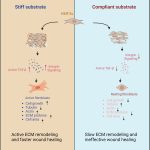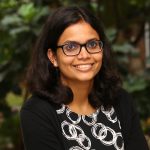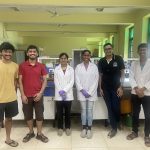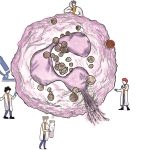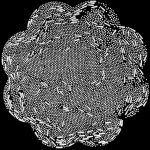Namrata Gundiah’s lab blends biology with mechanics to answer fascinating questions about human health and bio-inspired materials

“Understanding biology is really fun,” says Namrata Gundiah, an engineer working at the intersection of mechanics and biology. Gundiah is an Associate Professor and DST Ramanujan Fellow, and heads the “Biomechanics laboratory” at IISc’s Department of Mechanical Engineering. “All the techniques in my lab are in mechanics that we apply to problems in biology – this is the niche of our group,” she explains.
Gundiah chuckles as she says, “From a science perspective, [my colleagues] still don’t know where to put me in, the mechanics or biology part.” Her lab at IISc is an eclectic mix of engineers and biologists who study both biomechanics and mechanobiology. Biomechanics is the study of the structure, function and motion of biological systems ranging from tissues to organisms, whereas mechanobiology focuses on how cells perceive and adapt to dynamically changing mechanical cues.
“We are intrigued by form and function, an idea started by D’Arcy Thompson just over 100 years ago. We are excited to see how mechanics and mathematics can be used to explain the different shapes and patterns in nature,” adds Gundiah. She is the first woman to be a tenured faculty member at the Department of Mechanical Engineering, which is celebrating its 75th anniversary this year.
Two decades ago, as a graduate student at the University of California, Berkeley, Gundiah grew interested in certain proteins in arteries and the skin that undergo large deformations. These proteins are amorphous and exhibit rubber-like behaviour, which she describes as “exciting for someone trained in mechanics”. Degradation of such proteins can lead to aneurysms, caused by weakening of human arterial walls. An understanding of the growth of these structures during development and progression is hence important. Her interest in rubber-like materials continues at IISc, where she investigates the anomalies in structural proteins present in tissues that undergo dynamic stretch.
Tissues in our body exhibit both anisotropic and viscoelastic properties. The anisotropy results in materials exhibiting different properties along each direction, and viscoelasticity enables the materials to exhibit both viscous and elastic properties under deformation. Viscous materials exhibit time-dependent responses whereas elastic materials react instantaneously when stretched and return to their original state upon removal of the loads. Delineating the individual and coupled roles of these factors in tissue behaviours is hence an exciting research direction for her group.
The main interest of her lab at IISc has been in fibrosis. Collagen, although an important structural protein in the body, sometimes accumulates excessively on the tissues, leading to fibrosis – which results in remodelling of tissues and leads to dysfunction. Myocardial fibrosis, which affects the heart, may also lead to heart failure. To understand how material properties of tissues evolve in fibrosis, the group uses techniques from mechanics to explore the contributions of material symmetries in non-linear tissue mechanics and links those to underlying changes in the way cells interact with their environment.
Another area that interests Gundiah’s lab is to quantify how cells stick to each other and to the underlying substrate, and how they migrate under different cues. The properties of tissues are affected by the cells and the extracellular matrix, which is a complex 3D network of proteins and carbohydrates secreted by cells into their surroundings. Cells in the tissues are exquisitely sensitive to their environment and are constantly subjected to a vast repertoire of mechanical and biochemical cues.
Gundiah’s lab has developed techniques to quantify the forces exerted by cells on substrates during adhesion and migration in response to shear stress, cyclic stretch and confinement. Cell migration is also important in understanding processes like wound healing, development, and cancer progression. The group has fabricated micron-sized pillar array detectors, with included ridges, which enable them to direct cell migration and calculate traction forces exerted by cells.
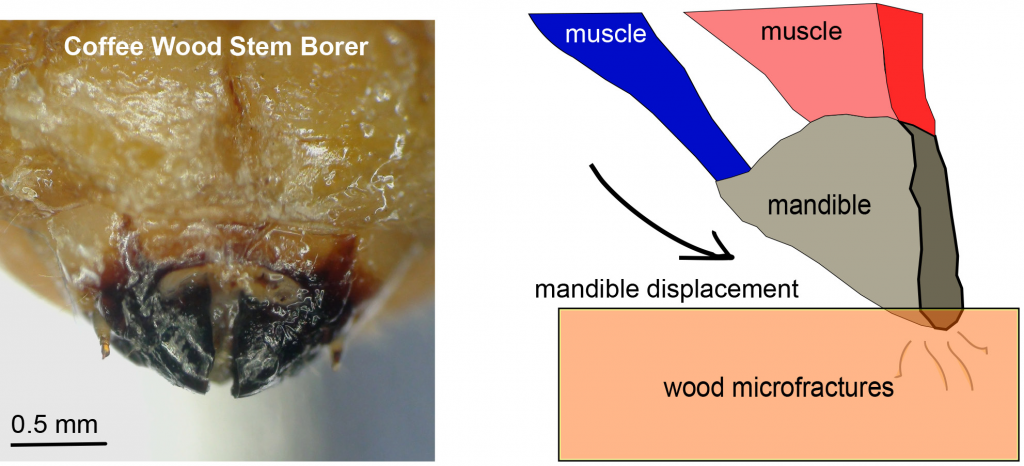
Apart from tissue mechanics, the group has interests in natural biomaterials and in bio-inspired structures. “I love insects!” says Gundiah when talking about her recent work on how coffee wood stem beetle larvae cut through wood to generate wood chips that they ingest. Substrate piercing, cutting and steering of probes by insects through materials is ubiquitous in nature. A better understanding of these processes may help in the design of bio-inspired cutting tools.
Another interesting work from the group is inspired by soft-bodied animals like caterpillars that can carry load, maintain posture, and negotiate difficult and complex terrain. These animals have muscle fibres oriented at specific angles in the body that enable movement. Designing materials inspired by such animals, with an ability to change their shape and stiffness under external loads, has important applications in soft robotics.
For her work, Gundiah often collaborates with experts in vastly different fields. “I find it very rewarding to work with people coming from different backgrounds,” she says.
When asked about her plans for further research, Gundiah says, “The whole idea of fibrosis is a question that will occupy me for another decade.” She feels that fibrosis is a rich and diverse area with several complex problems that remain to be resolved. “I have established links from the cellular level to the tissue level,” she says, “Integrating these links into a coherent picture is a challenging task that we are presently working towards.”


